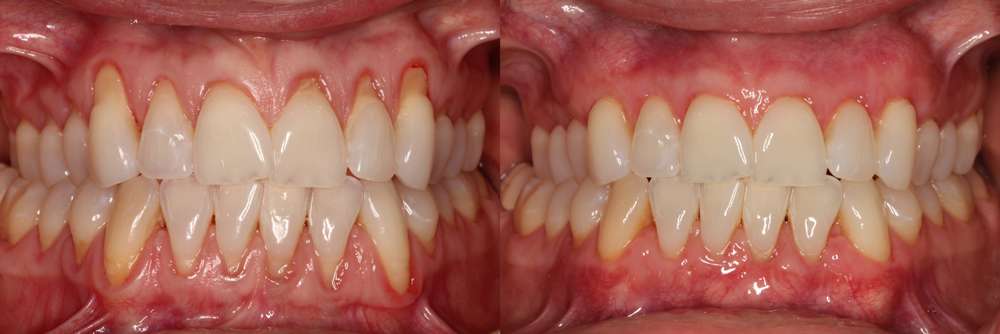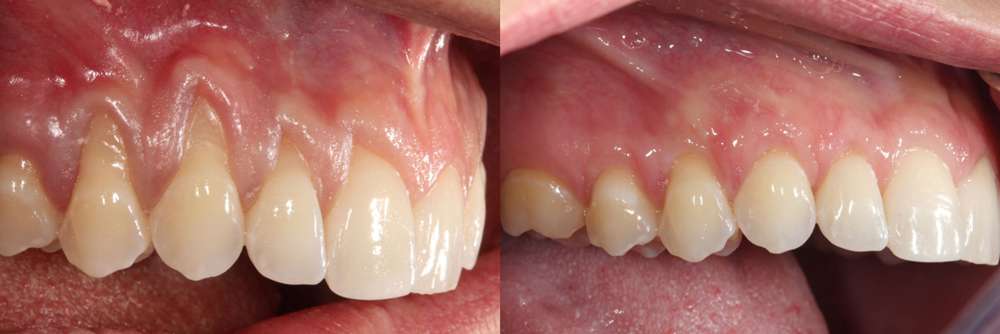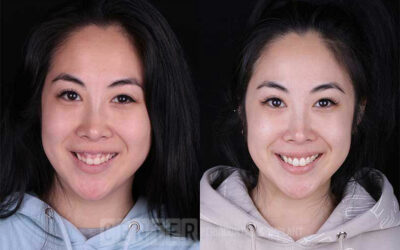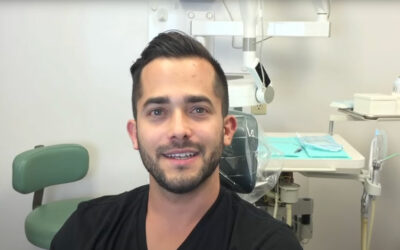How Painful Is Gum Grafting Surgery?
Healthy gum tissue protects the roots of our teeth and the bone that supports them. Ideally, the gum tissue should cover the entire root up to the anatomical crown, which is the portion of our teeth we see when we smile. Unfortunately, if you have exposed roots, it not only jeopardizes your tooth integrity; it can also make root surfaces prone to cavities and hypersensitivity (even with fairly good oral hygiene.)
Fortunately, there’s a grafting procedure that can correct receding gums.
Depending on the type of tissue graft recommended, your gum grafting procedure will require minor surgical steps. Understanding what to expect during and after gum graft surgery can help you plan ahead for a successful recovery.
You Won’t Need to Feel a Thing During Surgery
As with any oral surgery, our gum specialists will thoroughly numb your gums at the time of your procedure. The local anesthetic will take a few hours to wear off, so you’ll be back home long before the sensation starts to return to that area of your mouth.
Will I Need Pain Medication?
It’s not uncommon to take anti-inflammatory pain medication after your dental procedure. Ibuprofen is the most common. It’s best to take it before the local anesthesia wears off to minimize any unnecessary discomfort. By keeping swelling down, eating soft foods and cold foods, and using the prescribed antimicrobial mouthwash, you can expect only a day or two of downtime. Taking medication as prescribed will help you stay ahead of any unnecessary discomfort.
To expedite your body’s natural healing process, our gum specialist also offers platelet-rich fibrin (PRF) therapy.


Types of Gum Graft Surgery
The type of new gum tissue you receive can directly impact the comfort of your surgical site. For example, one type of gum graft may involve connective tissue underneath thinner gum tissue, while the other is a free gingival graft.
Understanding the different options for gum graft treatments will help you know what to expect after your gum surgery.
Connective Tissue Grafts (Autogenous)
Autogenous gum grafts use your own tissue to cover exposed roots. They tend to provide the best results and are the standard of care when it comes to treating gum recession. Since your body is more likely to readily accept your own tissues, a connective tissue graft offers high success rates. Combined with our PRF therapy, the overall process is also much more comfortable (as there is less swelling.)
A connective tissue graft uses healthy tissue from a donor site, which is usually the roof of your mouth. A small flap is made at the gum line, where the graft is attached.
Free Tissue Grafts (Autogenous)
Someone with thin gums that needs extra connective tissue around teeth or dental implants can benefit from a free tissue graft. The only difference between a free tissue graft and a connective tissue graft is that instead of connecting the donor tissue under the gums, the graft is shaped and sutured around the exposed tooth root or thin gums.
Pedicle Grafts (Autogenous)
This graft uses gum tissue from immediately around the tooth instead of the roof of your mouth. One part is retracted and stretched over into the desired location, then sutured in place. Like other autogenous grafts, these types of treatment reduce the risk of any tissue rejection.
AlloDerm® (Non-Autogenous)
AlloDerm treatment does not involve any additional surgery and is an excellent, non-invasive alternative to traditional surgical grafts. A tiny opening is made in the gums where the AlloDerm graft will set, and then it is sutured into place.
Recovery Time After a Gum Tissue Graft
It’s normal to expect a couple of days’ discomfort after a gingival graft is performed. Especially if donor tissue is removed from another part of the mouth. The best pain management is to avoid hard or hot foods, take medication as directed, and rest. A healthy diet and adequate blood flow (no exercising!) will help your new tissue “take” properly. During the healing process, you’ll use a special mouth rinse that will help with oral hygiene until you can resume brushing. Keeping the area clean, taking an anti-inflammatory, and proper eating habits are key.
The total healing time for gum grafts can be up to six weeks. But more than likely, you’ll only need a couple of days off from work. After that, simply take it easy and eat a soft diet until the entire graft site heals and we remove your sutures.
Faster, Advanced Healing with PRF
Our Los Angeles gum specialist is one of the only providers in the area to offer platelet-rich fibrin (PRF) treatment. PRF uses your body’s natural immune system to jump-start the healing process of gum grafts and other oral surgeries. A small vial of blood is drawn at the time of your appointment, then placed in a centrifuge to separate the plasma and fibrin particles from your red blood cells. At the completion of your gum grafting procedure, the PRF is placed into nearby healthy gum tissue (immediately adjacent to the gum graft) to trigger healing and acceptance of your new connective tissue.
Patients who receive PRF with their gum graft surgeries typically see better, faster results with a shorter recovery time.
The Minor Recovery Time is Worth It
If you’ve experienced oral health challenges in the past, plan to get dental implants, or are prone to tooth loss and periodontal disease, gum augmentation may be the only option to save your smile. By erasing receding gums, you can protect your smile for decades to come.
Considering the brief recovery time, any minor irritation from a gum graft pales in comparison to the heartache of permanent tooth loss. To ensure the gentlest process possible, we’ll provide medical advice to help prevent and relieve pain associated with receding gum tissue.
You Will Have Our Personal Number After Your Gum Graft
Our Los Angeles gum experts will give you the resources you need to have a successful procedure. We’ll provide you with important instructions to follow, but also a private phone number to call if you need assistance. Once you get back home and the anesthesia wears off, please feel free to contact us directly if you have any concerns. Someone will always be available to speak with you.
It’s Time to Contact Us About Our Advanced Grafting Procedures
Learn more about our advanced graft procedures (and pain management) with our dental care experts. Contact us today to reserve a periodontal surgery consultation.
You May Also Like...
Understanding TMJ Jaw Pain and Seeking Specialist Help
Navigating the complexities of jaw pain requires a deep dive into the various causes and conditions that lead...
Gum Overgrowth and the Causes Behind Gums Growing Over Teeth
At The Center for Advanced Periodontal & Implant Therapy in Los Angeles, CA, we know how difficult it can be to...
Stem Cells Tissue Regeneration: An Alternative to Classic Gum Graft
Gum recession is a common dental problem that affects millions of people worldwide. This condition occurs when the...



